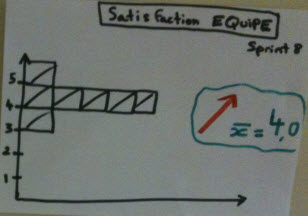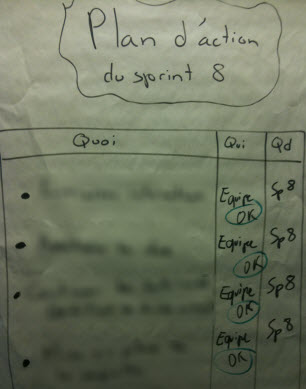Personas Method and Agile
Posted by jc-Qualitystreet on 2018/02/10
Here a short presentation I gave recently (in french) that will make happy Agile UX practitionners.
Agile Coaching, Product and User Experience, Agile & Lean Management
Saturday, April 27, 2024
Subscribe to the RSS Feed
Posted by jc-Qualitystreet on 2018/02/10
Here a short presentation I gave recently (in french) that will make happy Agile UX practitionners.
Posted by jc-Qualitystreet on 2013/07/30
Changing the culture of an organization is a complex and multifaceted operation that requires a lot of effort: this is why I like the word « transformation » . This transformation can obviously be undertaken from various angles … hacking is one of them.
Hacking is a viral and very relevant approach when it comes to change and improve cultural elements of everyday working-life, like meetings…
Meeting is a strong symbol in organizational culture… and meetings, often seen as waste of time, can be hacked!
Here are the 8 hacks…
Posted by jc-Qualitystreet on 2011/02/21
… the team is now sprint#9, one week before the end of the release.

Team Satisfaction High : "I am glad I’am part of the team and satisfied with how our team works together"

Actions items are tracked. Everything was done at the end of the sprint. The poster was displayed on the wall during the sprint.
What else?
Just that it was a pleasure to coach such a good team! Thanks you guys.
Posted by jc-Qualitystreet on 2011/02/14
I usually say to Agile teams that the most important outcome of a sprint (or release) retrospective (but also important workshops), is the Action Plan.
Both past and future oriented, the SCRUM retrospective meeting aims to discover what the team did well, understand what went wrong, and to find ways to improve. It’s an important and intense exchange and communication event.
But completing an action plan, at the end of the retrospective, is the only way to make it fully successful and to engage the team in a continuous improvement approach (Inspect & Adapt) for better performance.
Concise and just enough…
Only a short list of actions (4 max) and three columns that make it simple and effective.
Build in collaboration on a large sheet of paper. At the end of the meeting, the action plan will join the team’s information radiator, into the team’s workplace to make it visible every day by everybody’s eyes. Communication is crucial for continuous improvement, and visual management is an effective strategy to make the follow up and to maintain engagement.
At the end of the next sprint, actions items of the previous plan will be reviewed: Done or KO…
Of course, the actions included in the « what » column are SMART:
Posted by jc-Qualitystreet on 2010/11/15
During an agile transition program, do not let your managers by the roadside! Rather help them to become Agile managers and to control the evolution of their profession.
The « era of management 3.0« (agile and lean) is announced so make the middle manager a key player for change, between opportunity and necessity…
The case of middle management
« Top-Down » or « Bottom-Up », there is no debate anymore. We know today that a top management support and the ownership by the teams are both essential to ensure the success of the transition to agility. No, the issues of the Agile Enterprise are now in intermediate managerial layers of the organization.
How to approach them? How to convince them? How to transform them?
My experience with Agile projects and agile coaching in various sectors (banking, industry, software vendor …) showed me that this is the middle management that holds the keys to agility on the Long Term. Indeed, middle managers can be the most active supporters or the worst impediment and therefore the most dangerous opponent of the agile transformation.
With only one goal: the success of teams…
The « Command & Control » management style based on Taylorism and scientific management (OST) has shown its limits… the agile manager explores new dimensions (mostly related to facilitation & leadership) to ensure the success of all. The role within an agile organization becomes a clever trade-off between maintaining / abandoning some responsibilities and acquiring new skills.
So, even if every management role is unique, context-specific, here is the list of the 6 core activities of the Agile manager:
Engage conversations with managers and support them in their journey toward becoming an AGILE MANAGER !